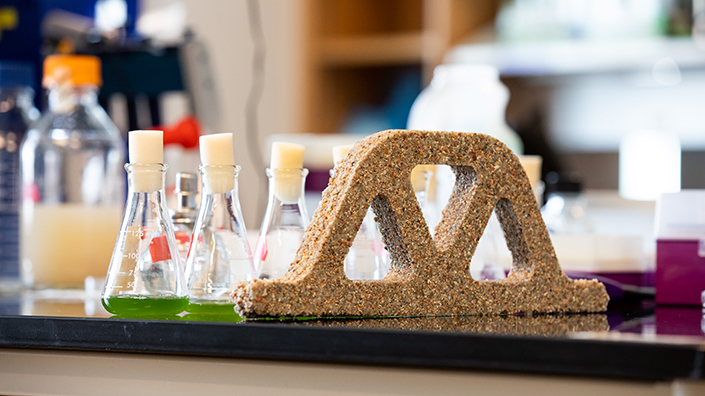Engineering news
New materials – sand, hydrogel and nutrients – were of course introduced after researchers halved the ‘parent’ brick, but the substances were converted into brick by bacteria from the pre-existing halves to form whole new units. One brick reportedly became eight new ones over three generations.
The ‘reproduction’ was made possible by the ingredients in the bricks, created by researchers at the University of Colorado Boulder. The team, led by engineer Wil Srubar, created a scaffold out of sand and hydrogel to which a photosynthetic cyanobacteria was added. The bacteria used moisture and nutrients from the hydrogel and absorbed carbon dioxide to grow and create calcium carbonate, the main ingredient in limestone and cement.
The resulting material reportedly has a similar strength to cement-based mortar. The bacteria stays alive in the right conditions, making the bricks a “Frankenstein-type” material, said Srubar.
The bacteria’s ability to spread and solidify material into new bricks could challenge conventional manufacturing of building materials, a major cause of carbon emissions. It “demonstrates the capability of exponential material manufacturing,” said Srubar.

The material can be shaped into different structures (Credit: CU Boulder College of Engineering and Applied Science)
While the material could provide a ‘green’ alternative to conventional concrete, it does have drawbacks. The bricks need to be completely dry to reach maximum strength, but drying stresses the bacteria and threatens its survival. To tackle the issue, the team is working to engineer microbes that are more resistant to drying out so they remain alive and functional. 9-14% of the bacterial colonies currently survive for at least 30 days.
The researchers have just “scratched the surface” of the material’s potential, said Srubar. The senior author of the research said the bricks could integrate other functions, such as absorbing toxins from the air, healing their own cracks or even glowing on command.
In the long run, he claimed it could even be useful for building structures where there are limited resources – like the surface of Mars, perhaps. “In austere environments, these materials would perform especially well because they use light from the sun to grow and proliferate with very little exogenous material needed for their growth,” said Srubar. “It's going to happen one way or another, and we're not going to be trucking bags of cement all the way to Mars. I really do think that we'll be bringing biology with us once we go.”
The research was published in Matter.
Want the best engineering stories delivered straight to your inbox? The Professional Engineering newsletter gives you vital updates on the most cutting-edge engineering and exciting new job opportunities. To sign up, click here.
Content published by Professional Engineering does not necessarily represent the views of the Institution of Mechanical Engineers.